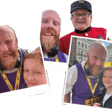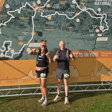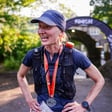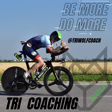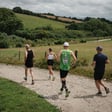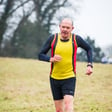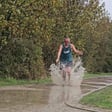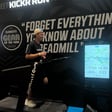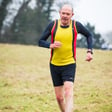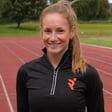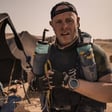Become a Creator today!Start creating today - Share your story with the world!
Start for free
00:00:00
00:00:01

Alex Wolf | Strength & Conditioning | Soar Today
Former Head of Strength and Conditioning and Head of Learning at the English Institute of Sport, Alex has supported over 250 Olympic, Paralympic and World Championship medal winning performances.
In this episode we talk to Alex about the Soar Ready to Run product and how 15 years of data has enabled the team to offer elite level, personalised strength & conditioning programs to everyone. We also talk about plyometrics and training with injuries.
Transcript
Introduction and Welcome
00:00:00
Speaker
Welcome everybody. Welcome anyone who's tuning in live. Welcome anyone who's tuning in post live events. So this is our first Twitter spaces and it will be episode 71 of the UK Lunchup podcast. Myself, Joe Williams and Michelle Mortimer, we're your hosts and we are chatting with our strength and conditioning partners, SAW. We've got founder Alex on his own account and we've got James on the SAW account.
Engagement and Interaction
00:00:28
Speaker
Alex is gonna work, we, myself and Michelle, we're gonna ask a few questions of Alex and James before opening up the floor so you can ask your strength and conditioning questions if you have any. If you want to ask a question, you can either come up and speak to Alex and James yourself or you can tweet us a question and we'll ask it for you. Alex, James, good
James Riley's Running Journey
00:00:49
Speaker
evening. Do you wanna give us a minute or two's introduction to you both before we dig in? Absolutely, Alex, do you wanna go?
00:00:59
Speaker
Go first, as you're the main man. Alex has lost connection, so why don't I introduce myself? You did this. Hi, I'm James Riley. I describe myself as Saul's resident
00:01:18
Speaker
resident runner. So I am a, well, I'm a sort of runner for the last eight years. I started running when my kids were first born and I needed to lose a bit of weight and out of that wish to do some exercise, an obsession was born and my life is now pretty much running.
00:01:44
Speaker
So when I'm not working with the SOAR guys, I'm actually work as a full-time running coach. So my life is running coaching and working with Alex and Josh and Tom on how we can support runners with their performance with the SOAR strength and conditioning. Thank you, James. Alex, are you back?
SAW's Origin and Philosophy
00:02:08
Speaker
I am sorry, that was totally my fault, that one. I went to disconnect to the internet.
00:02:18
Speaker
Cool. Introduce yourself, please. So I'm Alex. I'm one of the co-founders of SAW. We set SAW up. It's been about a year now since we set it up, but it has been in the making for a couple of years. I've spent and still do spend an awful lot of my time working in high performance sport. I spent 16 years within the British system.
00:02:44
Speaker
working with some of Britain's greatest athletes across an array of sports. And now I spent my time with SOAR, working with James and Josh and Tom, and the rest of my work is really helping individuals, teams and organizations to improve their performance, whether that's sports performance or strategic human performance pieces around what they're looking to.
00:03:13
Speaker
Try and achieve that. Thank you. Give us a little bit more information on that time you spent in the British system, please.
00:03:22
Speaker
Yes, I started back in the early 2000s where strength conditioning wasn't actually, I think, really, the first year or the second year where strength conditioning actually became a genuine career within the UK. So I started up in Sheffield many, many moons ago and did an internship up there and that's where I really got to cut my teeth on a load of
00:03:48
Speaker
Well, I suppose I made all my mistakes back then. Anyone who's listening now, please don't cringe too much about that. So I worked with a load of different Olympic and Paralympic sports. Then in 2008, I moved, no 2007, I moved down to athletics in London and worked in their development program and a number of their sprinters.
00:04:13
Speaker
middle distance endurance runners I was looking after and then I moved on to British rowing and spent five years working alongside them in preparation for the London and Rio games and then during that time I was seconded by the British Olympic Association to head up their performance services out in Rio and in preparation for Tokyo
00:04:34
Speaker
But just before Tokyo, I decided to quit it all and set up these businesses.
Personalized Training and Injury Prevention
00:04:42
Speaker
So that's, yeah, that was my kind of whistle-stop tour of working the UK system. Sorry, Joe, I think I lost you there.
00:05:04
Speaker
That's okay. Let's go back to the beginning then and tell us why you set up SOAR. So I had this kind of, it sounds really odd, a bit of a feeling of discontent with some of the work I was doing. We've spent, well I spent a huge amount of time trying to
00:05:29
Speaker
and improve performances of those working at the very elite level and it's been a huge amount of time doing that and then I had friends and family asking about how they can
00:05:43
Speaker
improve their performances and actually what became really apparent was that the principles that we apply to the very elite apply equally to those who just want to continue running and enjoy life really through exercise and physical activity.
00:06:02
Speaker
So when the opportunity came with Tom and I, it was kind of during Covid, we were walking around, at those times where you could only meet one person for an hour a day, it would be treading around eps and downs, talking to each other around what we could do. And we came to this conclusion that actually
00:06:24
Speaker
it be brilliant if we were able to kind of really distill all of our learnings or our collective experience of over 30 years of experience in this space and bring it into a place where everybody can have access to it and it's helping to kind of cut through all of the noise that when you look on the internet and there's so much out there it's like well can
00:06:45
Speaker
How can we really help people to genuinely stay, stay injury free and be able to do that without having to go to a gym and have to spend huge amounts of money on trainers and so on. So we wanted to make something really accessible, but really, excuse me.
00:07:04
Speaker
really accessible both from a kind of a content point of view but accessible also from the quality and the credibility point of view as well. So we went on this journey around really distilling down what things we know have worked and what things we know don't work and what we did was then kind of package that up as a way of really helping people and the big thing for me with all of this was philosophically we
00:07:34
Speaker
we kind of worked out that you can only help people if you know a little bit about them and where they currently sit. So that's where the risk assessment comes in and so on. So there's things like that which kind of guided us around how we move this forward.
00:07:51
Speaker
So I'm going to dig into the risk assessment and the personalised programming. So let's take that back a second. So how does SAW help runners? So fundamentally, the two areas in which it can help runners, the first is around consistency of training. And the second is around
00:08:14
Speaker
increasing the ability to decrease the risk of injury. So we can never totally mitigate that risk of injury, but we can definitely decrease that. So from a consistency point of view, one of the things we know and have spent a huge amount of time over the years is
00:08:34
Speaker
those who are able to train more consistently are and regularly are able to do more training and by doing more training we know that that helps them improve their performance and performance is more about them going out and
00:08:49
Speaker
doing or completing running, doing running, then it is about trying to break a world record. It's about the act of the run itself. And so we're really clear on this point that if we can get people running more, they are likely to improve their running performance. And we've seen that across pretty much every sport at every level that the more consistent you are,
00:09:20
Speaker
the more likely you are to improve your performance. The second piece is very much around the injury risk and what we know with running there are clearly very high rates of injury. I think we're probably seeing some of our social media that
00:09:39
Speaker
between 50 and 75% of runners will get injured each year, which is a huge amount. And most of that, 80% of that is overuse injuries and overuse injuries. We know we can have a large degree of control over, so we can manage that. And we know of those 80% of overuse injuries, 80% of those happen at the knee or below. So we can start to really kind of
00:10:07
Speaker
go down and drill down on this bit here that we can help runners increase their protection against overuse injuries and that's what SOAR does. It's identified the key areas in which runners are most likely to injure and the risk assessment and the training program basically are targeted towards those high risk sites. So you mentioned the risk assessment there? Yeah.
00:10:37
Speaker
Talk to us about that.
Assessment Methods and Development
00:10:39
Speaker
So the risk assessment, and we'll get onto the name in a little bit, I'm sure, but it's basically, it's not as health and safety as it's at when it is, but it's nowhere near as much as that. But what we've worked out for
00:11:00
Speaker
for runners that with low limb and particularly knee and blow being a really high injury risk site for overuse injuries
00:11:11
Speaker
that we can assess the muscles and the soft tissue around each of those joints in terms of its strength endurance or its condition, its capability to withstand repeated loading and its range of movements. And we know from the work we've done over the last 15 years or so that there's a
00:11:37
Speaker
there's a relationship between what a joint or the tissues around a joint can tolerate and its relationship to overuse injuries. So the risk assessment purposely goes after.
00:11:51
Speaker
those areas and you'll see the risk assessment. There's four assessments to range of movement to strength endurance or conditioning based tasks and they're looking at calf raise and they're looking at hamstring and the range of movement is
00:12:12
Speaker
walls are looking at ankle range movement and it's looking at the quad stretch as well. We know that if you are below a certain level then we know there's a higher risk
00:12:27
Speaker
there's an increased risk that you are unable to tolerate the amount of load that you're putting through your body while running and that higher scores obviously reduce that risk. We can never remove that but we know as you get closer to those scores and we know that there's a chance that you'll reduce that risk of injury. And the important bit here is this idea of the kind of the Pareto principle of the 80-20 club. We spend 20%
00:12:53
Speaker
of the effort to get 80% of the outcome. And for us that 80% for the vast majority, probably about 95% of the population is probably enough to reduce the risk or manage the risk of injury around the lower limb. So over 15 years, the history of how that was developed on reliability, what
00:13:22
Speaker
How have you got to this point? Give us some more detail on that 15 years, I suppose. And how do you get to that point of just having those four exercises that give you that information for you to be able to personalise a programme for someone? Yeah, okay. So it started with athletics many, many moons ago, where we were starting to identify athletes that were
00:13:51
Speaker
what's the word, coming back from injury and you would often get the high force or the high speed or power base assessments and they'd be kind of normal and they'd be returned back to from an injury and they would then break down again from injury. And it was only when we started to investigate a little bit more that it wasn't about what their maximum capability was, it was much more around their repeated capability. So we're like, okay, if hamstrings and calves and hips are being
00:14:22
Speaker
are being re-injured because they're not able to tolerate what we've asked them to do, then we need to change the way in which we train or rehab them. And what's really good being for the vast majority of athletes is that they have two legs, so we compare the non-injured and injured side and you get this quite reasonable scoring between the injured and non-injured side. So we started changing
00:14:49
Speaker
the way we started loading these individuals with the strength training. So much more higher volume work, low intensity.
00:14:57
Speaker
And then what came of that was that we needed to find some ways to assess that. So we wanted to then find really simple assessments which would assess that change in strip endurance or conditioning, so that high volume low intensity work. And that's where these assessments kind of
00:15:21
Speaker
became, became, came to fruition, I suppose. And then as we, as we moved through and I've kind of moved into, into rowing and we kind of introduced a lot more around in the rowing program and then what I didn't say about my time in the high performance system, I headed up the, the English Institute of Sport and looked after or oversaw all 40 Olympic, Paralympic sports and the 70 odd strength conditioning coaches across all of the,
00:15:48
Speaker
across all of the those sports and collectively we were able to integrate these assessments across most of the sports we started to get really really strong indication of all the things that were going on
00:16:05
Speaker
So we were able then to start to collect data and understand where what these assessments were really assessing and the most important thing was that these assessments needed to be completed in a manner which didn't require lots of equipment because you could end up being in a
00:16:22
Speaker
a hotel in the middle of nowhere with no equipment but you still needed to have some assessments of these individuals which is why they're really simple and you can see they're using things in your house like steps or the wall and so on to be able to do so that's where they they kind of first came about and the simplicity actually kind of was born out of trying to increase the reliability and the
00:16:46
Speaker
the validity to the validity being does it test what we really wanted to test and the reliability being can we repeatedly assess the individual with the same task and that's why they became so simple because we could remove a huge amount of the noise that normally happens with testing.
00:17:06
Speaker
just by keeping them simple. And we've tested and retested and we've assessed how reliable they are and they are probably some of the most reliable field tests that we can do of any field test in the kind of arsenal that we've had over the last 15 years.
Program Structure and Personalization
00:17:27
Speaker
And for those listening, so there's four tests, isn't there?
00:17:33
Speaker
which is a calf raise, hip bridge, and then there's a stretch up against the door frame. And the quad stretch, which I was zero on. It's fascinating when you actually do them, the simple things, and it gives you a real eye-opener. So my calf raises, for example, I could do 17 on my left and like mid-30s on my right. And I had no idea that there was such a staggering difference between the two. I was like twice the amount.
00:18:03
Speaker
Yeah, and I think when we spoke, we spoke about this previously and my sister and brother-in-law both being doctors, I'm about to sell them out now because they could be listening or might hear this, but both doctors and both do a lot of running. Both have had no injuries and one of the big things is when they became injured, the normal thing was just to rest and then when you're pain-free, you get back to running.
00:18:29
Speaker
and then they both would complain that they couldn't run for many more days or weeks because the same problem was occurring and what's effectively happened is that by injuring yourself you've changed the actual structure of the muscle or the tendon around that joint and it can no longer do what it did prior to being injured so
00:18:52
Speaker
running on it again is actually you're running on a even weaker and a less stable structure so when you see your left and right difference there what you probably can consider and go back to your history is like well have you had anything any injury or any anything that has really affected that side over the other and it's really really obvious when you have
00:19:17
Speaker
with your scoring where there's such a big difference that there's one side is clearly more vulnerable than the other side and that alone is a really valuable bit of insight because it means that you know what the issue is but the most important thing is that you can do something about it now as well. So tried you then
00:19:40
Speaker
act upon that data that you get. If somebody goes on, they complete the risk assessment, what happens? So once you complete your risk assessment, you get your report sent to you and it will highlight two things. It will identify your
00:20:01
Speaker
your individual risk of each of those areas and it will identify a collective risk and it's going to high, medium, low risk. And with that, you can do, I suppose, one or three things. The first thing is you can ignore it and hope the best. Two is that you can organize your own training around it. Or three, then based upon what SOAR offers, it offers a
00:20:27
Speaker
training program which is built upon your test data. So once you've completed the test or the assessments that will identify where your starting point is and then the training program will automatically be written based upon your existing capability and then it will try and move those forward. So if you have that left right difference as you describe and you've probably seen it in your program there's a
00:20:57
Speaker
there's the program's entirely biased towards making sure that your your weaker side can catch up with your right side so while your right side might be doing the same same volume it's based upon your weaker side and it's always trying to improve those differences and those the differences between left and right but also the how far away it is from our standard. Shall I know that you did and I think once it
00:21:28
Speaker
Sorry, it's James here. I was just going to say, I think what's exciting about the program. Sorry, I think James was just going to answer something there before I cut in. Did you want to go first, James? Thanks, Michelle. I think I was just going to say,
00:21:51
Speaker
what excited me about the SOAR program when Alex was describing it was, you know, it is so overwhelming the amount of strength and conditioning information you can get off the internet. And I think it was, you know, it was the attraction of having, you know, Alex and Tom's sort of unique experience distilling everything down actually to this is what matters. And then actually having something, you know, and I'm on week
00:22:17
Speaker
10 I think of the program actually having something that is personalized to you so it isn't too hard and it isn't too easy I think is a pretty unique unique offering sorry Michelle over to you
00:22:36
Speaker
Yeah, I was just going to say I did the risk assessment this morning, actually, and was surprised at how simple it was, but also shocked at how it really does target those areas that you need it to. Yeah, I was certainly surprised at just those four simple exercises, how much I need to work on personally. So I'm looking forward to getting a program with you, Alex.
00:23:02
Speaker
Does the programme just focus on those four areas though? Or is it a more all-encompassing thing? Yes, that's a good question. So the programme
00:23:17
Speaker
Programs be designed to focus on your scores from those four assessments, but we also recognise that there are other things that contribute to the risk of overuse injury.
00:23:34
Speaker
the program will always have trunk training in there because we know that if you can't tolerate loading through the lower limb, it tends to move its way up through the knee, the hip and through to the trunk so there's always a
00:23:50
Speaker
a bit of trunk training and we also know a stable trunk can improve pretty much any athletic performance economy and efficiency. There is also a little bit around the foot and ankle as well that we keep in there because we know that
00:24:06
Speaker
that that is also a really important area to focus on. So what you'll find is that each area is focused on, the program is written so that you complete it three times a week. When you first start, it probably takes about 15 minutes by the time you finish, week 10 to 12, you're looking probably closer to the half hour mark.
00:24:29
Speaker
but each area of the body is focused on twice a week so you're getting two dosages of loading a week or range of movement work a week and we reckon that that's about as small amount as you probably need or you can get away with
00:24:51
Speaker
to see the biggest gains. You can do more, but we also recognise that trying to do more is going to be more challenging, so we try and keep it down to as few sessions as possible to get the most amount of impact without losing the output piece of it too much.
00:25:15
Speaker
Thank you. If anyone listening would like to raise a hand and come up and ask any questions, it can either be about what we've been chatting about or anything, so there's strength and condition. I'm sure Alex and James will be happy to answer your questions. Before we came on, Alex, we had a little bit of a chat because you were thinking about changing the name of the assessment. Yeah. This was brought up weeks ago.
00:25:44
Speaker
by one of our colleagues who was like, it just sounds like it's a health and safety assessment. And it feels like you're back at work and you're having to do your manual handling training or whatever it is. And it doesn't feel quite right. So one of the things we want to do is to change the name to be a little bit more reflective of what we think
00:26:09
Speaker
what we think it is and actually it kind of sits kind of close to what people, I suppose, what people feel it connects with. And so we're gonna run a poll today as well this evening just to get your, the audience's insight around this as well, just to get a sense of what they think is a better name. I'm just trying to pull up the,
00:26:38
Speaker
names that we've come up for it. So we were looking at, is it a performance profile, a physical profile, a readiness profile or physical readiness profile? And these kind of names that we're trying to test out really just to see. Are the assessments more around readiness and preparedness and the physical side of it rather than this kind of very
00:27:06
Speaker
sterile risk assessment name for it. So yeah, we'll be really thrilled if you guys can fill in the poll when it gets shared live through the UK RunChat Twitter handle.
Plyometrics and Skill Development
00:27:19
Speaker
Yeah, we'll share that in a moment. So like I said, if anyone would like to ask any sensing condition questions of Alex, please do put your hand up or you can DM us or send us a tweet and we'll ask it for you. When you have, Alex, when you've hosted your chat hours and we've opened up the floor and you've had tweets come in, every time that you've hosted, there's been one, sometimes two questions about plyometrics.
00:27:50
Speaker
Do you just want to talk about plyometrics and how that fits in with running and strength and conditioning for runners and what is it? Yeah. So the simplest thing is like running is plyometric. And if you look at plyometric and it's true, true sense of the, um, the word it's, um,
00:28:13
Speaker
has a there's plyometrics is about the the absorption of landing turning that absorption force and and reapplying it back into the ground is in terms of its simplest form and the more you can be plyometric and you're running the more economic economical you can be and therefore you can
00:28:38
Speaker
you should theoretically, or not theoretically, it's been proven that you can run further or faster when you have much better plyometric or eccentric utilisation. And the important bit here is like when you look at some of the studies around running, you will see that
00:28:59
Speaker
So for a marathon, for instance, if there wasn't any energy recoil from the tendons and the ligaments of your foot, the tendons of your knee and ankle and the ligaments of your foot, then the energy cost to complete a marathon should be about 20% higher than what it actually is, which means you'll
00:29:17
Speaker
in a marathon running, you're getting 20% of your energy to complete the race just through the plyometric actions of the ligaments and the foot and the tendons of your ankle and knee, which is an incredible amount of free energy. So to optimize that, that's a real strength to do that. Sorry, excuse me.
00:29:45
Speaker
So the idea of having plyometrics within the training program is really, really important. But I think the challenge with one of the challenges, I suppose the opportunity I should say with plyometrics are that when you complete them, you
00:30:03
Speaker
can potentially increase your capability to transfer the muscle tendon behavior or the muscle tendon interaction that you have into running. But the challenge you will have with that is sometimes the muscles and the joints around those tendons cannot tolerate the loading. So that's why the program is more at the moment. It's designed more around the muscle.
00:30:31
Speaker
muscle and the conditioning side of strength training rather than the more plyometric side. And the plyometric stuff will come when it means that you've just got a basic level of being able to tolerate more loading. So the plyometric piece for us becomes this performance piece now. So when you are capable of being able to tolerate repeated loading, now actually once you can demonstrate that,
00:30:59
Speaker
plyometrics should just add to what's almost like the icing on the cake I suppose from that analogy allows you to fully utilize your physical capability while running. So it is hugely important. The risk with all of this is when you look, I was looking on social media yesterday at this,
00:31:22
Speaker
the types of plyometric activities which you see people doing or advocating can be quite
00:31:33
Speaker
quite advanced and you don't need them to be advanced they can be really simple and if you like one of the things I get any athlete that I work with which is ground base so running base so tennis players, footballers, runners whatever it might be one of the things we always get them to do is skip as a warm-up and the skipping just teaches the good foot placement and the reabsorption of the energy through the tendons and allow you to apply that more effectively and if you can skip more effectively then
00:32:02
Speaker
you are definitely going to be able to utilize that plyometric component within your running. Once we've done that, then you can move to more complex stuff. But it really doesn't need to be that complex. And I think then the other part with plyometrics, I think people also include just jump training with plyometrics.
00:32:28
Speaker
So the plyometrics needs a landing and then a rebound to jump.
00:32:33
Speaker
A jump is where there is no rebound and you're starting on the floor and you're jumping up and that's not really a plyometric activity. It's just a much more explosive strength activity. It doesn't make it any less relevant, but it's not truly or strictly a plyometric activity. So that kind of teaches the body to move quickly, but it doesn't teach this plyometric activity within the tendons of the knee and the ankle and the ligament structure of the foot.
00:33:04
Speaker
The simple landing and rebounding activities are pretty important. And then the final thing I'd say is about consistency. One of the big things we know about plyometric training
00:33:21
Speaker
the more skilled a performer is, the more force they can produce during these plyometric drills. If you just take a really simple 30 centimeter box, you jump off the 30 centimeter box and land and jump back into the air, that those who are novices will produce about one and a half times their body weight and force on landing.
00:33:47
Speaker
whereas a triple jumper for instance will produce upwards of eight or nine times their body weights when they land. So from the same height a more skilled person can produce more force and when you produce more force you can apply that into the ground and therefore jump higher or run further. So the reason why I say this is that consistency becomes really key. So if you repeatedly do
00:34:12
Speaker
the same task on an almost weekly basis over a long period of time. We're talking six to 12 months of time without really changing it.
00:34:20
Speaker
although the height might not have changed, your ability to produce huge amounts of force quickly does change. And that's really important because you become more skilled at it. So there isn't really this need to keep changing the exercise. It's about just keeping the consistent exercise and being comfortable with that consistency. And I had this argument with athletes all the time that they think the program's a little bit boring.
00:34:50
Speaker
My point back to them is that the consistency is what allows them to be so good at what they do. And this for me is the critical bit around apply metrics, not needing to make things complicated, being consistent with it and being comfortable that doing the same task will actually help you perform significantly better in the future.
00:35:12
Speaker
And it's interesting, Alex, someone messaged me an article from outside online by Alex Hutchinson today, which was talking about it had a study saying there was about a 3.9% improvement in running economy from plyometrics. And the subtitle of the article, where to pick up your point was, you know, it turns out they don't need to be complicated.
00:35:34
Speaker
or risky. So I think that just kind of puts it in context and I quite like the fact that 3.9% was then compared to the Vaporfly 4% being someone who's interested in super shoes. It's interesting because I think so I did my risk assessment week before last and as we mentioned I discovered the difference in my left calf being so much weaker.
00:36:02
Speaker
during covid i bought a skipping rope you know the times where we couldn't leave the house and we'd go out and you'd done your walk with the family so i bought skipping rope and i skipped barefooted and my left calf pinged i forgot about that and you've just reminded me of your skipping analogy well there we go i'm glad we've managed to get your your pathology of why that happened yeah thank you very much
00:36:28
Speaker
I suspect though if you did your the risk assessment prior to pinging your calf muscle there might have been a difference there before that that occurred but again this is me hypothetically speaking but with the plyometric thing I've got to go back to James's point there I think you're the one of the things we find with plyometrics as well is around this idea of
00:36:56
Speaker
safety that if you feel unsafe or you feel you're unstable while you're doing a plyometric activity, you're not going to be trying to optimize the landing and the rebound. You're going to be more concerned about landing and not hurting yourself or falling over.
00:37:15
Speaker
So one of the things we say with people with plyometrics is just put your hand against a wall and do your bounds or your drop jumping in place or your small drop jumps. And just by simply having a hand on the wall gives you a little bit more stability and it removes the fear or the safety component of it in terms of your perceived safety of it.
00:37:38
Speaker
and that allows you to focus on the activity and you do not detract or you do not remove any of the outcome in fact you'll augment that outcome because you feel more stable so that's why the simplicity really works because you can make it you can you can increase your own perception of the safety of it just by giving yourself a bit of external support your point about the consistency and yet people not seeing
00:38:07
Speaker
and improvement in the height that they jump, that's really where a significant amount of discipline comes in, doesn't it? So if you're doing that for six months and you're trying to jump higher and you don't, that takes some discipline, doesn't it? It takes a huge amount of discipline and it is hard because you
00:38:31
Speaker
you do want to move things forward. So when you're doing those kind of rebound jump, the drop jumps and so on, there's two components to the jump. One is how much time you spend on the floor, and then the second is how much time you spend in the air. And so you can, without having to look at jump height, you can theoretically
00:38:57
Speaker
work out what we call a reactive strength indexes or RSI, which is flight time divided by contact time. So how much time you spend in the air and divided by how much time you spend on the floor. So if you film yourself on a slow mo on your camera, you can frame by frame, you can work out when you hit the floor, count how many frames forward,
00:39:21
Speaker
until you leave the floor and then how many frames you're up in the air and then until you hit the floor again and you can work out really roughly if your reactive strength index has improved and that's a kind of standardized plyometric assessment which I still use if I don't have force plates or technology to measure that I will still film it and work out really quickly how long they
00:39:47
Speaker
they spent on the floor to get a rough idea if you've improved. So you can improve that score by spending less time on the floor.
Injury Prevention and Strength Training
00:39:55
Speaker
more time in the air or less time on the floor and more time in the air and that will give you a better score and that's one way you can start kind of measuring it yourself if you want to really want to go after that without having to buy expensive equipment just to be able to measure one test twice a week so that's where I'd go with it.
00:40:21
Speaker
We do have a question from Paul who's listening in. He's tweeted in. Do you advise that you can still run with piriformis syndrome? Oh, that's a good question. Fundamentally, running in pain or exercising in pain is not a good idea.
00:40:46
Speaker
the reason why that is not a good idea then it's obviously there's if there's pain there's clearly a trauma and there's clearly a something going on in that space which is um not not going going um going well and that's whether that's the actual cause or it's a symptom of something else that that'd be my first bit but the second bit is
00:41:10
Speaker
And I try not to nause you with too much science on this, but there is when you're in pain, you change the anticipation and the pre anticipation of movement. So if you know you're in pain,
00:41:28
Speaker
every time you go to put your foot down on the floor, the movement signal of how your foot is placed on the floor changes because you're pre anticipating that it's going to be painful when you put your foot on the floor. So therefore you change your movement strategy to compensate for that.
00:41:56
Speaker
Now when you start doing that, that becomes quite a significant impact on future movement and the health of movement as well.
00:42:05
Speaker
so you may find even once that piriform syndrome or any other injury for that matter has recovered that that pre-anticipation of landing to kind of protect yourself from the pain that you feel may still exist and that if you've done that for tens of thousands of times that can actually become a dominant movement pattern
00:42:28
Speaker
And that becomes quite difficult to move. Now, the other important thing is with injuries and particularly with pain, what you really want is one really stable positions that you move into. So if you think about ground contact being a really stable position that you have a good consistency in how your foot is placed on the floor, your knee and hip angle and your upright trunk posture and your alternated arm swing to leg or foot contact on the floor.
00:42:58
Speaker
and sort of the contractual, so opposite arms, opposite leg action to the foot that's on the floor. Now, when you become injured, what you then get is this really, really variable, so not just in pain as well, it's really variable positioning or landing of each foot strike. So suddenly you don't actually land consistently anymore.
00:43:25
Speaker
And that becomes a problem too. So both of those things actually can increase further risk of injury elsewhere in the body or continue to exacerbate the piriformis. So the challenge is, you know, you've had the thing of no pain, I can't believe it was that, training pain.
00:43:52
Speaker
No pain, no gain. We kind of talk about don't train in pain because there is no gain. And that ultimately means that you're likely to put yourself at more risk of that injury, of the existing injury or increase the risk of injuries elsewhere because you've changed the way in which the body is loading and the body is not designed to load in the way that you've just changed. I hope that wasn't too
00:44:23
Speaker
No, Paul's replied again. He said, thanks for the advice. I'm actually waiting for an MRI. She's on the 9th of June. I feel for Paul, I've had piriformis syndrome. I mean, from my perspective, you know, I only echo, don't train in pain if it's more than like three out of 10.
00:44:45
Speaker
rest it, eventually mine subsided sufficiently that I could run on it without getting it worse, but it was agonizing. That's nasty. Shell, have you got any questions? No, I think you've actually done a really good job of answering all the questions that I jotted down before we started our chats. Yeah, I think the thing that stood out for me was just about the consistency and
00:45:15
Speaker
you know, taking into account that strength training isn't meant to be that exciting, is it? We just need to just keep doing it, be really consistent. And I think if people can go away and take that on board, I think we'll all be doing much better. Yeah, the way I liken strength training in this bit, it's like a seatbelt in a car. You kind of need it.
00:45:40
Speaker
you only know you need it is when you don't have it, then it becomes a real problem. So yeah, it's, it doesn't, it doesn't have to be pretty. And it doesn't have to be glamorously done in the gym, and most of the time, just the way which we structure it, just using your own body weight or simple pieces of equipment and space that you can
00:46:05
Speaker
You can, when I say equipment, I'm talking about chairs and steps in your house rather than anything more than that, you can pretty much do whatever you need to give yourself a bit of protection.
00:46:20
Speaker
And we put out a tweet today saying, you know, if you used some of the time you spent watching TV or on a screen with strength training, that could make a real difference. I think, you know, I'd almost add to that to say, actually, you know, some of the stuff we're looking at here, you can do while you're watching TV, you know, and things like that. So it's actually, you know, stuff, it's quite easy.
00:46:44
Speaker
to fit in your day-to-day, in your day-to-day life, you can actually, you know, do some other things while you're doing it. How do we then, how do we impress upon people the importance of strength training? Because quite often what happens, and we see this on the UK RIN chat channels, is that people will get in touch with you because they're injured, and then they think about strength training. So how do we get people starting strength training before they need it, you know, to prevent injury?
00:47:15
Speaker
It's a question that we ask ourselves for most weeks about how basically what you're asking is how do you tell sport people to do something that they don't know they need it right now?
00:47:32
Speaker
And that's what we're trying to answer that question. I don't think I've got a concise or an articulate answer to that outside of we can keep it simple. We can keep it short and it can be done, as James says, anywhere you want to. But fundamentally, I think what's
00:47:57
Speaker
The very existence of SOAR is to make it much more accessible and to know that it's a credible thing that will actually make a difference in your body's ability to tolerate running. So I think that for me is probably the principle that I'm probably knowing what James's view and that you might have something more to add to that.
00:48:23
Speaker
I was going to say, look, the secret sauce to running, as we all know, is doing it consistently. Yet the chances are there's a 50% chance you're going to get injured in a given year.
00:48:37
Speaker
So anything you can do to prevent that injury is going to make you a better runner. And that is my view on why you do it. We all love to go for a run rather than do our strength training, but doing our strength training will mean we can go for a run in the future.
00:49:00
Speaker
It's really, you know, what we're suggesting here, you know, I know strength training can feel intimidating. It can feel like you don't know what you want to do. And also you're going to look an idiot doing it. You know, it's like going to yoga and you're, you know, you, you see the running meme of the runner as the tin man and everyone else bending down, you know, this is, yeah, this is simple. You can do it. It will improve your running.
00:49:26
Speaker
I was going to say, I guarantee that Alex probably wouldn't like me guaranteeing anything. I suspect you will improve. I put this out here. It's not a guarantee, but I have yet to work with an individual who hasn't improved with the introduction of some type of stroke training in their program. Whatever sport at whatever level.
Competition Winners and Conclusion
00:49:50
Speaker
Cool. Alex, we've been running a competition in the last
00:49:55
Speaker
three weeks where people have completed the risk assessment and they've got involved and there's a Garmin up for grabs and I believe from one of those up prizes. Yes, so first of all thanks to everyone who's who entered the competition. Josh had
00:50:23
Speaker
Done a random number generator before we came on and had identified the winner and five runners up. So the winner gets the watch and they will get a free program. And the five runner ups will also get a free program. So the winner is Beth Owen. Congratulations.
00:50:45
Speaker
And then the five runner ups are Peter Crisp, Pete Cleeseby, Laura Horn, Sally Minichela, and Wes McIntosh. So in the next 24 hours, we will email you directly and
00:51:04
Speaker
get all the details for you Beth to send a watch, but for all of you, how she can get access to the program. So congratulations all for your wins and thank you very much for jumping on and joining in the competition with us. Yeah, congratulations everybody. And if you haven't completed the risk assessment, you need to go to SOAR.today
00:51:31
Speaker
and you'll find that under Ready to Run. The poll's live for choosing a new name for that. And if you do have any strength and conditioning questions that you haven't asked this evening, then you can always send us a tweet, tag in. Obviously, at Train with SAW and Alex and James and the team there will be there to support you. Is there any final questions, comments, or anything before we wrap it up?
00:52:04
Speaker
Alex, James, thank you very much. Thank you, everybody who's listened in. Thanks, Cheryl. Anyone who's listened in, incidentally, this is our first Twitter spaces. So please do drop us a DM or send us your tweets if you'd like to hear more with our partners, with guests. And we're also open to having co-hosts just like we do with the chat hour via tweets on a Sunday evening. So let us know what you think. Thank you, everybody. Thank you all. Thanks for having us. Thank you, everyone.


